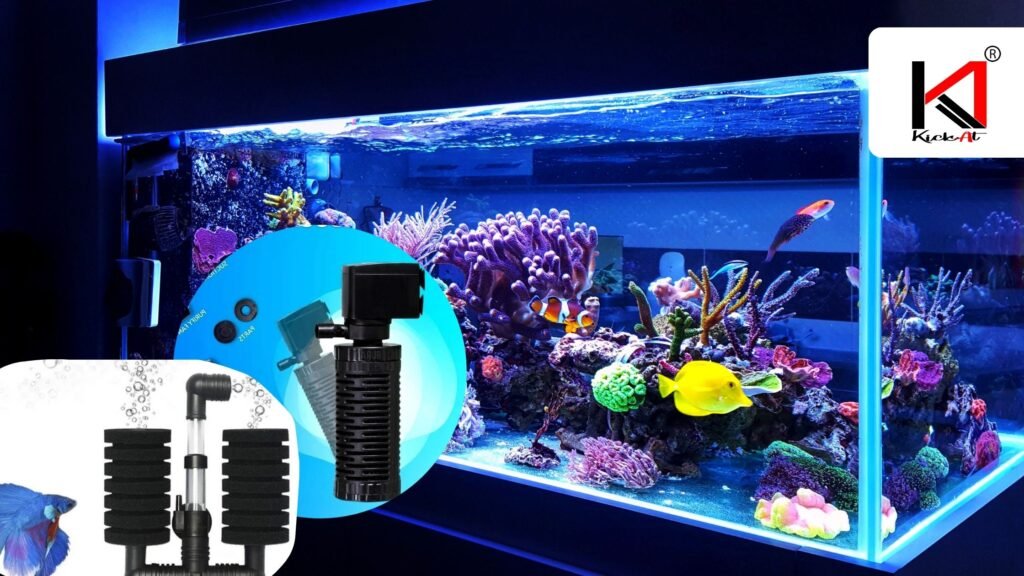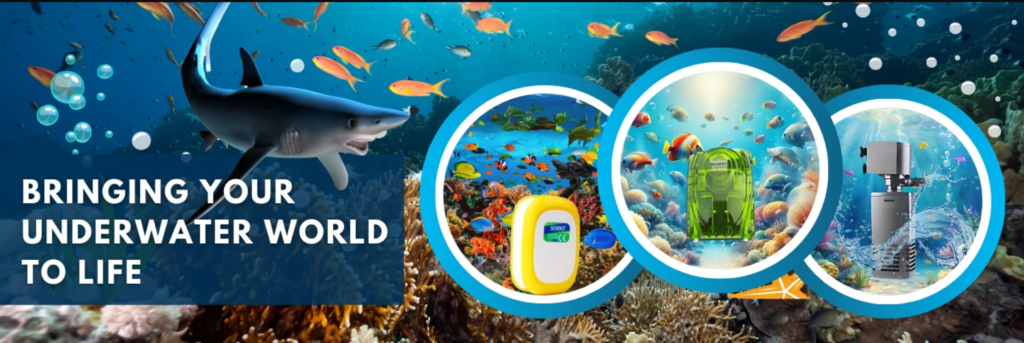Filtration is one of the most important factors to consider when establishing an aquarium as well as to secure the health and well-being of your aquarium pets. One of the most effective and simplest types of filtration systems, which is easy to operate even for beginners, is the Aquarium sponge filter, also known as a bio sponge filter. No matter how small your fish bowl is, or how large your aquarium system is, it is possible to learn the working principle of a fish tank filter sponge so you can keep your fish in crystal-clear, healthy water. In this blog, we will discuss what an Aquarium sponge filter is, its mechanism of operation, its benefits, and how it compares to other aquarium filters, such as aquarium top filters and aquarium internal filters. What is an Aquarium Sponge Filter? A sponge filter is a simple, effective, and inexpensive filtration system used in aquariums to filter the water and provide the necessary bacteria with a surface to grow. It is composed of three principal elements: Sponge (filter media). The biological and mechanical filtering is performed through the aquarium filter sponge as the primary medium. Lift Tube or Outlet- This pushes the filtered water into the tank. Air Source (Aquarium Filter Pump or Oxygen Pump)– This pump forces air into the filter to cause movement and oxygenation of water. The bio sponge filter for aquariums works without the need for strong suction or complex machinery, making it an excellent choice for delicate fish, shrimp, and fry that can be harmed by powerful water currents. How Does a Sponge Filter Work? The functioning of a sponge filter for a fish tank is based on air-driven filtration and biological purification. Here’s how it works step by step: Air Pump Connection The sponge filter is attached at one end of the aquarium filter pump (or oxygen pump) with airline tubing. As the pump forces the air in the tube, the bubbles in the lift tube of the sponge filter come out. Water Circulation The bubbles form a vacuum effect and pull in the water through the filter sponge contained in the fish tank as the bubbles rise. The particles of debris, waste, and uneaten food may become trapped in the sponge due to this movement. Mechanical Filtration The sponge is a mechanical filter and catches the water particles. This maintains your aquarium in the neatest condition. Biological Filtration As time passes, the sponge is colonized by beneficial bacteria, which are also grown on the surface of the sponge. These bacteria turn the bad ammonia and nitrites (of fish waste) into bad nitrates that are less bad – this is referred to as the nitrogen cycle. That is why it is commonly referred to as a bio-sponge filter. Oxygenation Rising bubbles are also helpful in enhancing the oxygen levels in the water, which enhances the overall health of the tanks, and the fish is fed with sufficient oxygen to flourish. Types of Sponge Filters Although all of the sponge filters operate in the same principle, they are available in various styles to fit into different aquarium environments: Single Sponge Filter Most applicable to small aquariums or breeding tanks. It contains a single outlet and an aquarium filter sponge. Double Sponge Filter Ideal for medium-sized tanks. It gives a greater capacity to filter and a greater surface area in which the useful bacteria can multiply. Corner Sponge Filter It will fit well in the corner of the tank, and it will not take up much space to ensure proper water circulation. Advantages of Using a Sponge Filter A bio sponge filter offers many benefits, especially for aquarists who prefer a low-maintenance and gentle filtration option. 1. Excellent Biological Filtration The porous sponge provides a huge surface area for beneficial bacteria to colonize. These bacteria are essential for breaking down toxins and maintaining stable water chemistry. 2. Gentle Water Flow Since sponge filters use air pumps rather than impellers, the water flow is soft and ideal for fish fry, shrimp, or betta fish, which dislike strong currents. 3. Cost-Effective Sponge filters are affordable and long-lasting. You only need an aquarium filter pump or oxygen pump to run them. 4. Easy Maintenance Cleaning a fish tank filter sponge is simple — just rinse it gently in tank water to remove debris while preserving beneficial bacteria. 5. Backup or Supplemental Filtration Even if you use a top filter or internal fish tank filter, adding a sponge filter can enhance biological filtration and provide redundancy. Sponge Filter vs. Other Aquarium Filters It’s helpful to compare sponge filters with other common filter types to understand their role in an aquarium setup. Filter Type Description Advantages Best For Sponge Filter Air-driven filter using a sponge for biological and mechanical filtration Affordable, gentle flow, great biological filtration Breeding tanks, shrimp tanks, small aquariums Aquarium Top Filter Positioned on top of the tank, it uses cartridges and media Strong mechanical filtration, easy access for cleaning Medium to large tanks Aquarium Internal Filter Placed inside the tank with a motorized water flow Compact, efficient water movement, mechanical & biological filtration Regular aquariums, planted tanks If your tank houses delicate fish or fry, go for a bio sponge filter for aquarium setups. For heavily stocked tanks, combine a sponge filter with an aquarium internal filter or top filter for best results. How to Install a Sponge Filter Installation of the sponge filter of the fish tank is easy: Assemble the Filter: Place the sponge on the base and put it in the lift tube. Attach the Air Pump: Attach the Air Pump: an airline tube is used to join the sponge filter to the aquarium filter pump or oxygen pump. Install Check Valve: This will eliminate backflow of water to the air pump. Install the Filter: Install it at one corner or on the wall of the tank. Switch on the Pump: You will find there are bubbles appearing, which will mean it is working. That is all–your sponge filter
What is an Aquarium Sponge Filter and How Does it Work? Read More »




